
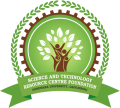
Core Divisions
Science & Technology Resource Centre Foundation Gadchiroli
Aquaculture Division »
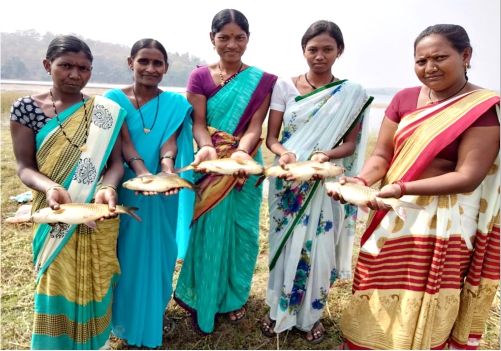
Vision
To empower fish farmers in Gadchiroli district with sustainable aquaculture practices, innovative technologies, and robust market linkages, fostering resilient livelihoods, enhancing food security, and driving regional economic growth.
Strategic Goals
- Sustainable and Quality Fish Seed Production at Source: STRC envisions establishing Gadchiroli as a hub for high-quality fish seed production to meet local and regional aquaculture needs. By leveraging portable carp hatcheries, the initiative focuses on increasing fish seed productivity and promoting healthy aquaculture practices. This includes selecting and maintaining disease-resistant broodstock, providing training in hatchery management, and implementing rigorous quality control standards. Through efficient market linkages and outreach, STRC aims to support over 200 fish farmers, enhancing the profitability of their operations and reducing dependence on external seed suppliers. This initiative will foster a self-reliant fisheries sector and contribute to environmental conservation and food security.
- Integrated Fish Farming (IFF) with Other Livestock: The Integrated Fish Farming model expands sustainable aquaculture by combining fish farming with poultry and livestock. This approach diversifies income sources and enhances food security, directly benefiting 20 smallholder farmers in selected clusters. By building infrastructure, providing quality inputs, and offering technical training, the initiative increases household income by 30-50% while fostering sustainable farming ecosystems. This model empowers marginalized groups, including women and tribal communities, and encourages community collaboration through shared resources and collective action.
- Aquaculture Facilitation Centre (AFC): The Aquaculture Facilitation Centre will serve as a knowledge hub, delivering technical training, advisory services, and continuous support to fish farmers, cooperatives, and vendors. Equipped with state-of-the-art facilities and demonstration ponds, the Centre promotes best practices in aquaculture, addresses real-time issues, and fosters community engagement through workshops and knowledge-sharing events. By enhancing market access and financial literacy, the AFC strengthens the aquaculture community, ensuring long-term economic empowerment and sustainable growth.
- Research and Development in Aquaculture and Fisheries: STRC prioritizes scientific research to innovate and adapt aquaculture practices to Gadchiroli’s unique environmental challenges. The focus includes studying indigenous fish species, piloting advanced systems like BIOFLOC and RAS, and developing cost-effective feed and biosecurity measures. Collaborating with research institutions and advocating for supportive policies, STRC ensures that cutting-edge knowledge is disseminated to local farmers. Field trials and capacity-building programs further enhance the adoption of sustainable practices, driving productivity and economic viability in the region.
Bamboo Division »
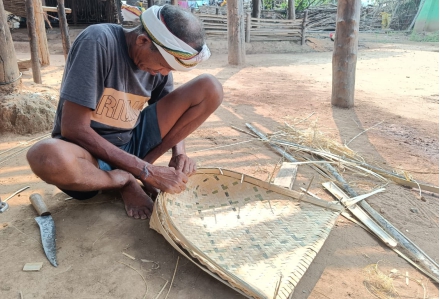
Vision
To transform bamboo into a cornerstone of sustainable livelihoods, economic development, and ecological innovation by fostering design-driven bamboo enterprises, advancing bamboo-based research, and strengthening the bamboo resource management ecosystem in Gadchiroli.
Strategic Goals
- Establishment of a Design Innovation Center and MSME-Level Bamboo based Production Industry: Develop a cutting-edge design innovation center and production unit in Gadchiroli with MSME-level capabilities to revolutionize bamboo products. This initiative aims to empower local artisans, elevate bamboo craft to global standards, and bolster the local economy. The primary focus will be given to bamboo as structural material. By creating a decentralized artisan ecosystem, STRC will provide resources for skill development, establish production facilities, and promote bamboo as an eco-friendly alternative to conventional structural materials. This endeavour aspires to position Gadchiroli as a hub of sustainable bamboo innovation and entrepreneurship, while fostering economic resilience and cultural preservation among artisans.
- Development of a Bamboo-Based Business Ecosystem and Improved Bamboo Resource Management in Community Forest Rights (CFR) Areas: Build a robust bamboo-based business ecosystem centred on sustainable resource management in CFR areas. Analytical studies will guide strategies for optimizing bamboo resources; while establishing a germplasm collection and testing diverse bamboo species will expand opportunities for high-value applications. Through this initiative, STRC will strengthen the bamboo supply chain, connecting bamboo harvested from CFR areas to entrepreneurs and consumers, and create community enterprises that generate revenue and employment. This ecosystem-oriented approach will not only enhance livelihoods but also encourage the community to adopt sustainable forest management practices.
- Research and Development in Bamboo: Drive innovation in the bamboo sector through targeted research and development programs. Initiatives such as species-level research, bamboo mapping using geospatial technology, and the development of a “Bambusetum” in Gadchiroli will contribute to the scientific understanding of bamboo’s potential. These efforts will provide a foundation for sustainable bamboo-based solutions, from craft-friendly species cultivation to high-value industrial applications, ensuring that bamboo serves as a versatile resource for economic and ecological benefits.
Natural Resource Management Division »
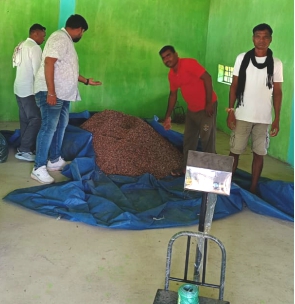
Vision
The Natural Resource Management Division envisions transforming the rich biodiversity of the Gadchiroli and Chandrapur regions into a catalyst for community welfare and sustainable development. By integrating traditional knowledge with cutting-edge research, the division aims to establish itself as a leader in conservation, economic empowerment, and innovation across diverse domains, with a flagship focus on medicinal plants through the Medicinal Plant Resource Centre (MPRC).
Strategic Goals
- NTFP Collectivization & Commercialization: Conservation and sustainable use, promote the conservation of endangered or over-exploited species, establish sustainable practices for long-term resource availability. Promotion of cultivation and sustainable harvesting, train and support local and tribal communities to cultivate commercially valuable NTFPs, enhance productivity, ensure quality, and establish market linkages for economic growth.
- Agriculture & Allied Activities: Technology Demonstration and On-Farm Adoption Facilitate the integration of innovative agricultural practices by developing demonstration plots, distributing modern tools, and conducting field trials. By enabling 700 farmers to experience the benefits of advanced technologies firsthand across 100 acres, the wing enhances productivity and resilience while driving on-ground adoption of sustainable farming methods. These efforts ensure increased farmer confidence in adopting innovative technologies, ultimately improving livelihoods and resource efficiency.
- Medicinal Plant Resource Centre (MPRC): The MPRC will serve as a strategic initiative to harness the potential of medicinal and aromatic plants for biodiversity conservation, equitable growth, and academic advancement. Acting as a center of excellence, it will support local and tribal communities by fostering biodiversity preservation, improving market access, and empowering livelihoods while enhancing Gondwana University’s role in advancing knowledge and fostering collaborative growth.
- Documentation of Indigenous Medicinal Knowledge: Forest dependent tribal communities, especially the local Traditional Healers or Vaidus across the Gadchiroli region, nestled in the lush green forests with rich diversity of valuable plant resource, are known to share a symbiotic relationship, have plethora of indigenous medicinal knowledge and are known to be the sole custodian of the age-old wisdom in ethno-medico botany. Such valuable indigenous knowledge inherited from previous generations, gurus, old texts and observations, is now facing an eminent danger of being irretrievable in the absence of scientifically documented evidence and validation. To address the concern, STRC initiated the Van-aushadhi Abhiyan in 2017, Vaidu Sammelan in 2019 and development of the Vaidu Directory in 2021 to document this traditional wisdom and practices, culminating in the establishment of the Vaidya Chikitsalay in 2022. This initiative aims to promote traditional healers and their healing practices, and provide them due social recognition. Furthermore, this unique initiative opens the door for intensive research leading to the marriage of traditional healing practices with modern healthcare, ensuring holistic well-being for all, going forward.
Applied Research and Academics Division »
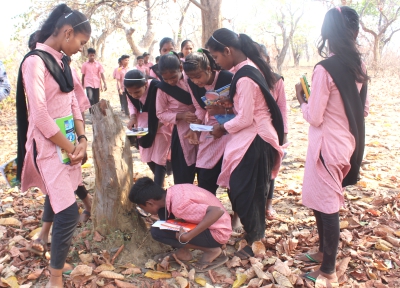
Vision
To lead transformative research, innovation, and education initiatives that integrate science, technology, and indigenous knowledge to foster sustainable development, capacity building, and socio- economic resilience in Gadchiroli and Chandrapur.
Strategic Goals
- Innovative Research and Resource Development: Establish a comprehensive framework for conducting scientific studies, resource mapping, and technology need assessments. This pillar will create a centralized repository of data and information on Gadchiroli and Chandrapur, supporting the development of scientific resource materials and tools for diverse applications. Research areas will include education (primary, secondary, and teacher development), product innovation, and applied technologies. These initiatives aim to generate actionable insights, foster data-driven decision-making, and build a strong foundation for sustainable development in the region.
- STRC Assistance for S&T Application Scheme: Expand the scope of the STRC Assistance for S&T Application Scheme to encourage innovative, solution-oriented research with practical applications. This includes supporting patenting of products and designs, promoting scientific publications, and hosting research webinars and seminars. The scheme will provide a platform for translating research findings into scalable solutions and fostering collaborations between researchers, practitioners, and industry stakeholders. This pillar will strengthen the link between research, innovation, and impactful implementation.
- Design and Execution of Short-Term Academic Programs: Develop and execute targeted academic programs, including the flagship Diploma in Bamboo Entrepreneurship and Design, and short-term courses in bamboo product design, business development, non-timber forest produce (NTFP), and traditional medicinal knowledge. These programs will cater to emerging market needs and empower participants with specialized skills, fostering entrepreneurship and livelihood generation. By addressing skill gaps and promoting indigenous knowledge systems, this pillar will create pathways for self-reliance and community-driven growth.
- Implementation of Environment Education Programs: Advance the Environment Education Program for tribal school children with a vision of onboarding 50 schools and reaching 2,000 children. The program will integrate context-specific modules to enhance environmental awareness, cultural knowledge, and ecological stewardship among tribal youth. Through hands-on activities, teacher training programs, and community engagement, this initiative will empower young learners to become active participants in sustainable development while preserving their heritage and ecological balance.
Development Communication Division »
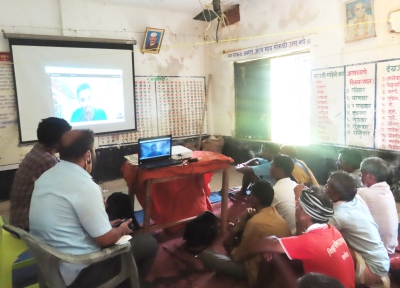
Vision
To amplify the reach, visibility, and impact of STRC’s programs and initiatives by leveraging digital platforms, publications, and outreach activities. The C4D domain seeks to empower communities, promote innovations, and foster engagement through effective communication strategies while enabling market access for local products and services.
Strategic Goals
- Web-Based Digital Outreach (STRC Programs): Strengthen STRC’s online presence through an interactive and comprehensive website and active social media pages. These platforms will showcase program updates, technological advancements, case studies, and impact stories to engage a wider audience. By sharing success stories, research breakthroughs, and community impacts, this initiative aims to build a robust digital identity for STRC, inspiring stakeholders, fostering partnerships, and attracting more participation in its programs.
- Publications and Print Media: Leverage print media to highlight STRC’s achievements at regional, state, and national platforms. Regular publications, including newsletters, research reports, and impact brochures, will disseminate valuable insights and success stories, positioning STRC as a thought leader in science and technology for rural development. Through strategic media campaigns and press coverage, STRC will strengthen its visibility and credibility while promoting the significance of its interventions.
- Extension Programs through Mobile Demonstration Units: Expand the outreach and functionality of STRC’s mobile demonstration units to increase awareness and engagement. These units will traverse the remotest locations in Gadchiroli and Chandrapur districts, conducting live demonstrations, interactive sessions, and workshops to educate communities about STRC’s programs, technologies, and sustainable practices. This initiative aims to bridge the communication gap in underserved areas, ensuring inclusivity and widespread impact.
- Platforms for Digital Marketing of STRC Products: Develop and enhance platforms for the digital marketing of STRC products, including bamboo crafts, Gondwana crafts, and NTFP-based products and services. By establishing e-commerce channels and strengthening the online marketplace presence, this initiative will connect artisans and producers to broader consumer bases, driving sales, and creating economic opportunities. Digital marketing efforts will emphasize the uniqueness, quality, and sustainability of these products, fostering greater demand and empowering local communities.



